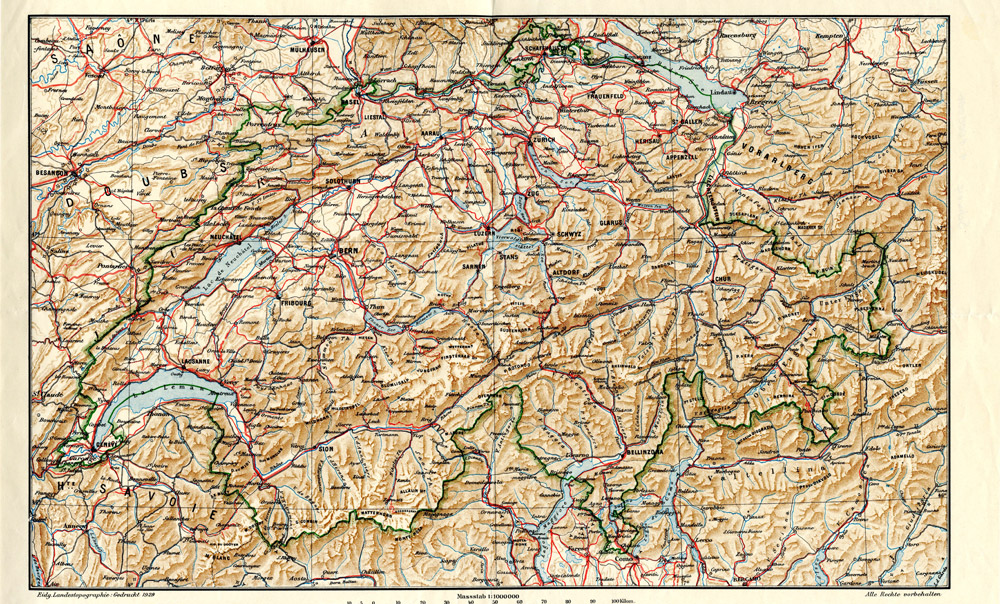#5: Landkarten im Reduit
Ernstfall 1940: Bei einem Überfall der Wehrmacht hätten die Schweizer Karten vernichtet werden müssen.
Am 15. Mai 1940, fünf Tage nach dem Überfall der deutschen Wehrmacht auf die Beneluxstaaten, erliess die Eidgenössische Landestopographie die Weisung, dass im Fall einer feindlichen Invasion geografische Karten und Atlanten der Schweiz vernichtet werden müssen, um sie einer Nutzung durch den Feind zu entziehen. Dies konnte entweder durch Verbrennung, durch Versenken in einem Gewässer oder durch Übergiessen mit Säure geschehen. Diese Weisung hatte Konsequenzen für das Geographische Institut der Universität Zürich, das über eine umfangreiche Sammlung topografischer Karten von beachtlichem wissenschaftlichem Wert verfügte.
Für die allfällige Vernichtung dieser Sammlung beschloss der damalige Rektor Paul Niggli, während des Sommers einen Heizkessel im Hauptgebäude, wo sich das Geographische Institut damals befand, in ständiger Bereitschaft zu halten und die Karten in dessen Nähe zu deponieren. Der entsprechend instruierte Hauswart könnte bei Kriegsausbruch sofort das Feuer anzünden und das Material verbrennen.
Die Vorstellung, dass die Kartensammlung vernichtet werden könnte, bereitete Otto Flückiger, dem stellvertretenden Direktor des Instituts, grosse Sorgen. Er wandte sich am 24. Mai in einem Schreiben an Rektor Niggli und schlug diesem vor, dass er die Karten statt in den Heizungskeller des Hauptgebäudes in eine entlegene Landschaft im Gebirge bringen würde. Es stehe ihm zu diesem Zweck – von einer ihm bekannten Persönlichkeit – eine Alphütte zur Verfügung. Die Karten wären dort sowohl gegen einen feindlichen Zugriff wie auch gegen Beschädigungen etwa durch Nässe geschützt.
Aus den überlieferten Unterlagen ist leider nicht ersichtlich, ob auf Flückigers Vorschlag eingegangen und die Kartensammlung in Sicherheit gebracht wurde. Auf jeden Fall hat die Sammlung die Kriegszeit unbeschadet überstanden. Zu Standortwechseln kam es lediglich im Zusammenhang mit den verschiedenen Umzügen des Geographischen Instituts nach seinem Auszug aus dem Hauptgebäude im Jahr 1954. Seit 1983 befindet sich das Institut auf dem Campus Irchel. Die Kartensammlung ist über den Lesesaal der Institutsbibliothek zugänglich.
Sandra Morach, UZH-Archiv
